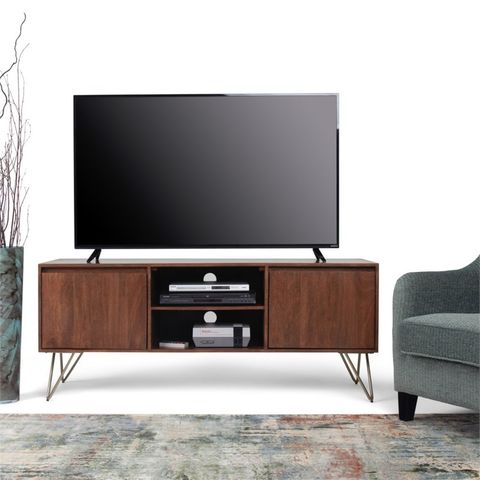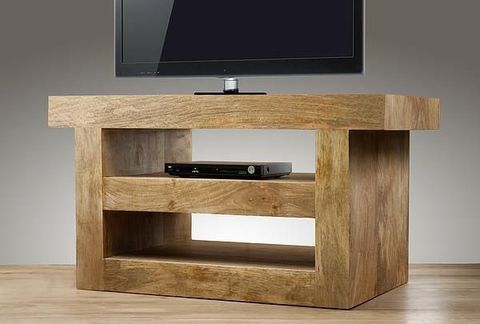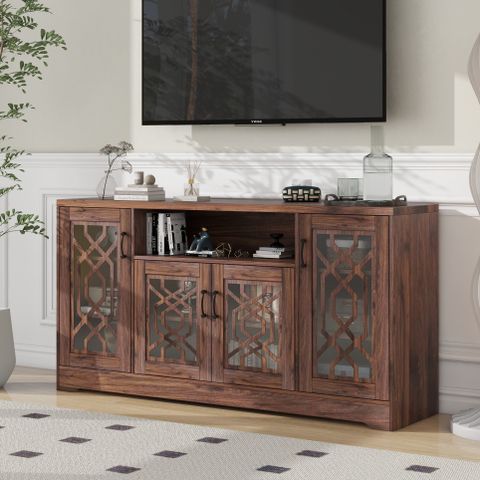In today’s living spaces, our entertainment systems have become central to our daily lives. Yet too often, we’re left choosing between beautiful furniture that doesn’t serve our needs or functional pieces that look like they belong in a hardware store. What if there was a way to have both? This isn’t just about aesthetics—it’s about creating spaces where form and function work together in harmony.
Picture this: You’ve finally found the perfect spot for your television setup. It’s got great lighting, comfortable seating, and enough room for all your gadgets. But when you try to fit everything in, you realize your stylish entertainment center is too shallow, or your sleek console has no cable management. Sound familiar? That’s exactly why balancing form and function in modern media furniture matters so much. We spend hours crafting our homes to reflect our personalities, but sometimes we forget that furniture must serve a purpose beyond looking pretty. When done right, media furniture becomes a seamless part of your space rather than an afterthought.
Why Modern Media Furniture Needs Both Beauty and Purpose
Let’s talk about why we can’t just pick one. Think about it—when you’re designing a room, you want everything to feel intentional. Your coffee table isn’t just a surface for drinks; it’s a conversation starter, a place for books, and maybe even a spot for your morning coffee. Same goes for media furniture. It needs to handle the weight of your equipment, manage cables, and accommodate your viewing habits while still making a statement.
Consider a high-end entertainment unit. If it’s purely functional, it might look like something from a storage warehouse. If it’s purely aesthetic, it could lack the organizational features you actually need. The magic happens when both elements complement each other.
Modern media furniture should do more than hold things. It should tell a story about your lifestyle, your preferences, and how you want to live. A well-designed piece can transform a cluttered corner into a sophisticated focal point. The best designs make you forget you’re looking at furniture at all—they simply blend into the room.
Understanding Your Space and Lifestyle Requirements
Before diving into design options, ask yourself some hard questions:
• How many devices do you need to house?
• Do you have a dedicated home theater or casual viewing setup?
• What’s your cable management preference?
• Do you want to display items or keep everything hidden?
• What’s your budget range?
These answers shape your choices dramatically. For example, someone who loves to showcase their collection of gaming consoles will want different features than someone who prefers clean, minimal lines. A family with multiple screens might need more open shelving, while a single person might prioritize compactness.
Think about traffic flow too. Will people walk past your media area? Does it sit in a corner or against a wall? These factors influence whether you want a freestanding unit or one built into a wall. Your lifestyle determines whether you need sliding doors or open access, and whether you’ll benefit from integrated lighting or simple shelving.
The key is matching your real-world needs with your design vision. Sometimes that means compromising a little on one element to get the other right.
Key Design Elements That Create Balance
There are several crucial elements that help achieve that perfect balance:
• Proportional Scaling: The furniture should match your room size and TV dimensions. A massive entertainment unit in a small apartment can overwhelm the space, while a tiny cabinet next to a large screen looks out of place.
• Smart Storage Solutions: This includes hidden compartments, adjustable shelves, and cable management systems. Good storage makes the difference between a chaotic mess and a clean, organized space.
• Material Selection: Wood, metal, glass, and composite materials each bring different qualities. Wood offers warmth and classic appeal, while metal adds industrial sophistication. Glass creates openness but requires more maintenance.
• Color Coordination: The piece should either complement existing colors or provide a bold contrast that enhances the room. Neutral tones offer flexibility, while bolder colors can become dramatic focal points.
• Functional Details: Consider drawer configurations, door styles, and lighting. These aren’t just decorative—they solve real problems in your daily routine. Integrated LED strips, for instance, can highlight your equipment while reducing eye strain during evening viewing sessions.
Each of these elements works together to create a cohesive experience. When properly balanced, they create a sense of completeness that feels both visually pleasing and practically useful.
Popular Styles and Their Practical Applications
Different styles offer varying degrees of form and function balance:
Minimalist Designs: These focus on clean lines and simple shapes. They work best for smaller spaces or those who prefer a clutter-free environment. Look for pieces with built-in cable management and hidden storage solutions.
Industrial Chic: Features raw materials like steel and exposed wood. These pieces often have a strong visual impact but require careful consideration of how they’ll integrate with other room elements.
Traditional Styles: Offer rich textures and ornate details that add character. They work well in larger rooms where you have space to showcase craftsmanship.
Modern Contemporary: Blend classic and current trends. These often feature innovative materials and smart technology integration.
The key is understanding which style suits your lifestyle. A minimalist approach works perfectly for someone who values simplicity and organization, while traditional styles might better suit someone who enjoys rich textures and historical references. Industrial designs can work in creative spaces or urban apartments where bold statements are welcomed.
Consider what you’re willing to compromise on. If you want maximum functionality, you might sacrifice some visual flair. If you prioritize aesthetics, you may need to accept less efficient storage solutions.
Cable Management and Technology Integration
This is where many people struggle—the invisible but essential part of media furniture. Cable management isn’t just about keeping wires neat; it’s about creating a safe, efficient system that prevents damage and makes future upgrades easier.
Effective cable management involves:
• Planning before installation
• Using proper cable routing channels
• Choosing appropriate cable covers
• Ensuring adequate ventilation
Many modern units now come with pre-installed cable trays, hidden pathways, and even wireless charging stations. These features can make a huge difference in how your space functions daily. Some units even incorporate smart technology, allowing you to control lighting or temperature through simple apps.
A common mistake is underestimating how much cable work you’ll need. Plan for future growth—what if you add another device later? Will your current setup accommodate that? Smart furniture accounts for this by providing extra space or flexible configurations.
The goal is to make your technology invisible while ensuring it’s easily accessible when needed. This often means investing a bit more upfront to avoid messy, tangled wires later.
Making Smart Choices Without Breaking the Bank
You don’t need to spend thousands to get quality media furniture that balances form and function. Here are some strategies for getting the most value:
• Prioritize Essentials: Focus on what you really need first. Basic storage and cable management are more important than fancy finishes.
• Shop Seasonally: Retailers often offer sales around holidays or new product launches. This is a great time to find good deals.
• Consider DIY Options: Simple projects like building your own entertainment center can save money while giving you complete control over design.
• Look for Multi-Purpose Pieces: Some furniture serves dual roles—like a console that doubles as a dining table or a media unit that also functions as a bookshelf.
• Quality Over Quantity: Invest in one solid piece rather than several cheap alternatives. Good construction means less replacement and more satisfaction.
Remember, the cheapest option isn’t always the best value. Sometimes spending a bit more upfront saves you money later in repairs or replacements. Look for warranties, customer reviews, and return policies when making purchases.
Also consider secondhand options. Many people upgrade their furniture regularly, leaving quality pieces available at lower prices. Just make sure to inspect carefully for wear or damage that might affect functionality.
Future Trends in Media Furniture Design
The industry continues evolving rapidly. Here are some emerging trends to watch:
• Smart Integration: Furniture that incorporates IoT technology, including built-in speakers, sensors, and app connectivity.
• Sustainable Materials: Increasing demand for eco-friendly options using recycled or responsibly sourced materials.
• Modular Systems: Flexible pieces that can be reconfigured as needs change.
• Biophilic Design: Incorporating natural elements like plants or wood textures for a calming effect.
• Customization Options: More companies offering personalization features to match individual tastes.
These trends reflect changing consumer expectations. People want furniture that adapts to their lifestyle changes and supports their environmental values. The future holds exciting possibilities for even better balance between form and function.
As technology advances, we’ll see more seamless integration between furniture and digital experiences. Imagine furniture that adjusts lighting based on viewing preferences or automatically organizes itself based on usage patterns. These innovations promise to make our living spaces even more intuitive and enjoyable.
Balancing form and function in modern media furniture isn’t just about creating pretty objects—it’s about crafting spaces that support how we live, work, and play. When you thoughtfully consider your needs, lifestyle, and design preferences, you can find solutions that feel both beautiful and practical. Whether you’re building a new home theater or upgrading your current setup, remember that the best media furniture doesn’t fight against your life—it works with it.
The journey toward finding that perfect balance takes time and experimentation. Don’t be afraid to try different approaches or mix styles. Sometimes the most successful designs come from unexpected combinations. What matters most is creating a space where your entertainment system feels like a natural extension of your living area, not an intrusion. With careful planning and thoughtful choices, you can build a media furniture solution that truly serves you—and looks amazing doing it.














